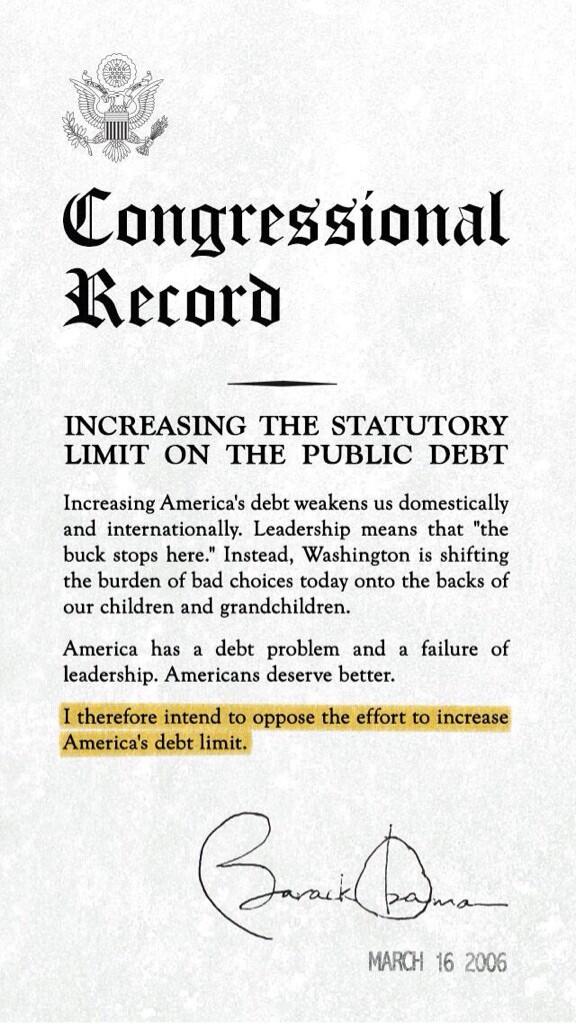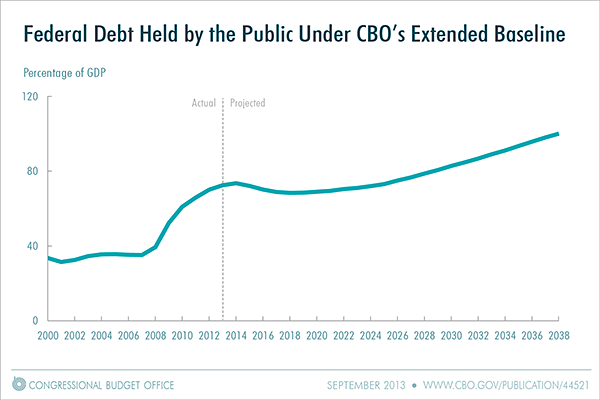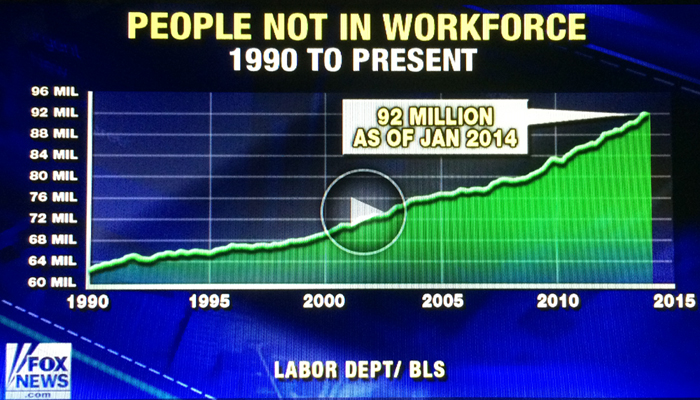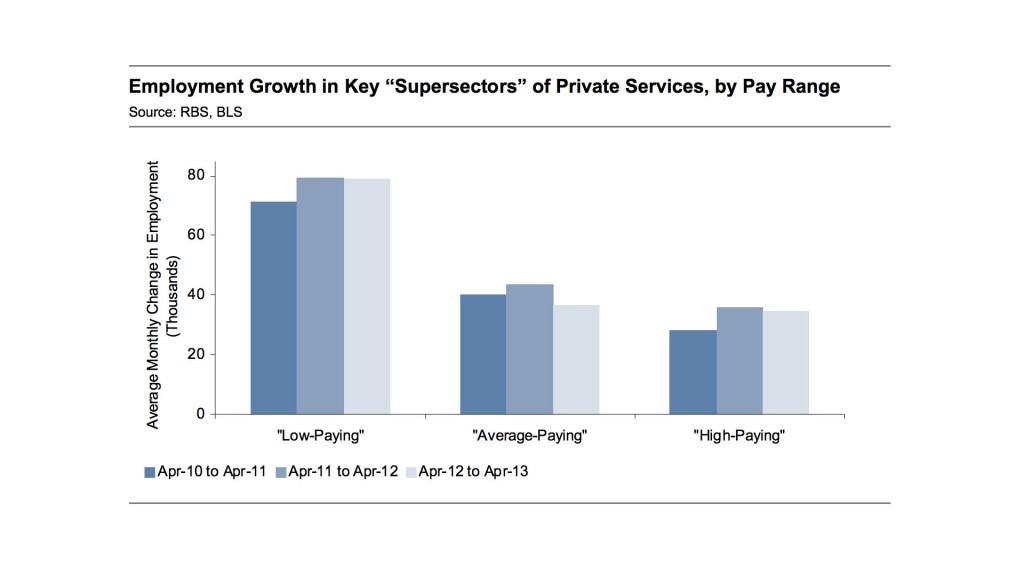
President Obama’s Economic Report Card
original article written by Net Advisor™
WASHINGTON DC. President Barack Obama will make his State of the Union Address (#SOTU) Tuesday, January 28, 2014, where he will discuss his plan and insights for the next year. President Obama is expected to talk about “income inequality,” increasing the minimum wage, and immigration as a key focus.
While pushing for a new agenda, the agenda over the last five years seems to have gone to the waste-side. In this report, we take a look at the economic statistics since President Obama took office.
[1] National Debt:
U.S. National Debt Soared Under Obama.
U.S. National Debt: up a whopping $6.651 Trillion
The nonpartisan Congressional Budget Office (CBO) said in their 2013 Long-Term Budget Outlook that the U.S. deficit is unsustainable.
“Between 2009 and 2012, the federal government recorded the largest budget deficits relative to the size of the economy since 1946, causing federal debt to soar. Federal debt held by the public is now about 73 percent of the economy’s annual output, or gross domestic product (GDP).
…Moreover, debt would be on an upward path relative to the size of the economy, a trend that could not be sustained indefinitely.”
— Source: Congressional Budget Office (CBO) (PDF) (Full Report PDF, 126pps)
[2] US Credit Rating Lower:
U.S. Credit Lower Under Obama
Mr. Obama is the first sitting President in U.S. history to be attributed to a downgrade of the U.S. credit rating. Two credit rating agencies downgraded the U.S. credit rating, one in 2011 the other in 2012. Both credit agencies cited concerns about the apparent unwillingness to control government spending, which increases default risk to the U.S. economy.
A third credit rating agency, Moody’s warned the U.S. government six times — every year from 2008 to 2013 that they might downgrade the U.S. credit rating. Moody’s Chief Economist, Mark Zandi is a huge Obama supporter. In July 2013, Moody’s upgraded U.S. credit outlook to “stable from a negative watch.”
The first credit agency to downgrade the U.S. credit rating was Standard & Poor’s. S&P is now being sued by the Obama Administration. There are recent allegations that the Obama Administration threatened to retaliate S&P over the U.S. credit downgrade. S&P upgraded the U.S. credit rating in June 2013 from “negative to stable outlook,” however S&P still maintains U.S. credit rating one notch below AAA .
A fourth credit rating agency, Fitch warned last October that they might cut the U.S. credit rating.
“Although Fitch continues to believe that the debt ceiling will be raised soon, the political brinkmanship and reduced financing flexibility could increase the risk of a U.S. default,” the firm said in a statement.”
— Source: Reuters, Oct. 15, 2013
Since S&P upgraded the U.S. debt. to “stable outlook,” the national debt has actually increased by $538 Billion (Source: U.S. Treasury PDF).
- See our reports on the U.S. deficit

[3] Welfare, Poverty & Homeless Children:
Welfare Spending, Poverty, and Homeless Children All Increased Under Obama.
Here are some cautionary statistics that puts the Obama “economic recovery” into question.
- Welfare Spending: $3.7 Trillion over last 5 years (accounts for 55.63% of the Obama Deficit).
- Number People on Food Stamps: 46.6 Million.
- Number of Americans in Poverty: 46.5 Million (p13).
- U.S. Child Poverty Rate (under 18): 21.8% (or about 1 in 5) (p13)(Map).
- Homeless American Children (K-12): 1,168,354 (Record High).
I would speculate that the U.S. poverty rate is actually much higher than what is being reported. The reason why I speculate this is because the way the federal government calculates the poverty rate. Those receiving government assistance (welfare, food-stamps, medical, unemployment and other benefits) show as income to the recipient and thus these assistance programs are not counted in the poverty rate. CNN put it this way:
“The official poverty rate reported Tuesday does not include things like government benefits and the effects of medical and work expenses on the cost of living. It is also not adjusted for regional differences in housing costs.”
If one backs out all the trillions in government welfare, entitlements, other benefits and assistance, then looks at where people really are financially, it’s very possible that the U.S. poverty rate could be double or even higher than what is officially reported based on total welfare spending.
The U.S. has attempted to rid (or reduce) the poverty rate for the last 50 years. The result of these programs have only increased the number of people in poverty, and increased the amount of money spent on welfare programs. Thus, this 50-year old “War on Poverty” program has not worked. The U.S. continues to use the same programs expecting a different result [Full Report].

[4] U.S. Labor Force:
Record number of Americans out of the work force under Obama.
- Number of Americans NOT in the Work Force (no job): 92 Million (35 Year Record High).
This is a staggering number of people who are not in the labor force. The U.S. government does NOT count people as “unemployed” if they are not deemed to be in the labor force based on government math. This brings us to the unemployment rate.
[5] Unemployment Rate:
The U.S. unemployment rate has gone down, but the math is questioned.
When you start factoring eligible workers not in the labor force, the true unemployment rate is is really significantly higher than advertized.
Separately, I discussed in a 2010 report that U.S. federal agencies and departments issue on average 8,000 new regulations a year. Massive regulations have not translated into less debt, less welfare, less poverty or more jobs.

[6] 58% New Jobs Past 3 Years Are Low-Pay Says Study
The National Employment Law Project (NELP) is a more progressive ‘advocacy organization for employment rights of lower-wage workers.’ NELP did a study covering 3 years of the “economic recovery” through 2012 and found that 58% of all the new jobs created are low-paying jobs.
The government also now defines a “manufacturing job” to include those working in food-processing [Report, Point 8].
[7] Household Income & Inflation Rate:
Median household income up slightly over Obama’s first term but not after inflation.
Since 2009, medium household income is up just $796.00 or a mere fraction of one percent at .015%. When factoring the official government calculation for inflation household income is not keeping up with inflation costs.
Medium Household Income Fell Slightly in 2012
The U.S. Department of Commerce reported that median household income fell slightly from 2011 to 2012 (p1), from $51,100 (in 2011) to $51,017 (in 2012), down $83 (p5).
Inflation
Based on government math, total inflation from 2009-2013 was 8.00%. Keep in mind that the government does NOT count food and energy prices in its inflation (CPI) index. In reality, anyone who buys fuel, uses energy, or eats food have seen prices climb faster than the government’s methodology for inflation.
[8] Energy Prices (Oil):
Energy prices skyrocketed under Obama.
- U.S. Oil Prices (WTI) (net change Jan 20, 2009 to Jan 24, 2014): +150%
- EU Oil Prices (Brent Crude) (net change Jan 20, 2009 to Jan 24, 2014): +162%
Oil prices have dropped from their peak in part to modest increase domestic U.S. drilling (shale fracking), which is expected to decrease oil prices by 2020 say a 2013 Reuters poll. Unfortunately the Obama Administration has been blocking a potential higher-paying job growth over the Keystone pipeline.
A former EPA official recently went to prison for fraud told U.S. lawmakers that he was working on a project to “modify the DNA of capitalism” (Deposition Transcripts, PDF 263pps).
According to the U.S. Depart of Energy, in 2012 the U.S. still imports about 40% of foreign oil [Source of imported oil by country name and by amount PDF.]
[9] Health Care Costs:
HealthCare Costs Soar. Obamacare will probably hurt the middle-class the most.
According to a study (PDF) by the Rand Corporation, healthcare costs are hurting middle-class Americans. Clearly the wealthy can afford it, and the poor are generally subsidized by government (taxpayers). The middle-class takes the big economic hit when it comes to healthcare costs.
- Total Healthcare Spending (2009-2012): $10.6 Trillion
In short, the federal government has been the biggest growth area in the economy, and the size of government has not translated into savings anywhere in the economy.
[10] Summary: Time to Go to Work.
President Obama’s expected State of the Union Address about income inequality, increasing the minimum wage, and immigration does not solve run-away government spending, addresses the national debt, improve the quality or quantity of jobs, reduce the high poverty rate, reduce record welfare spending, address the record number of homeless children in the U.S., decrease foreign oil dependency, nor does it reduce soaring healthcare costs.The above data suggests the bigger the government the greater risk to the U.S. economy.
After five years, we’d have to say there is a deep concern about what are the real priorities of this Administration. It seams that golf, parties, fundraising, vacations and campaigning have more attention than the U.S. economy.
____________________________________________________________________________
Original article content, Copyright © 2014 NetAdvisor.org® All Rights Reserved.
NetAdvisor.org® is a non-profit organization providing public education and analysis primarily on the U.S. financial markets, personal finance and analysis with a transparent look into U.S. public policy. We also perform and report on financial investigations to help protect the public interest. Read More.
___________________________________________________________________________

